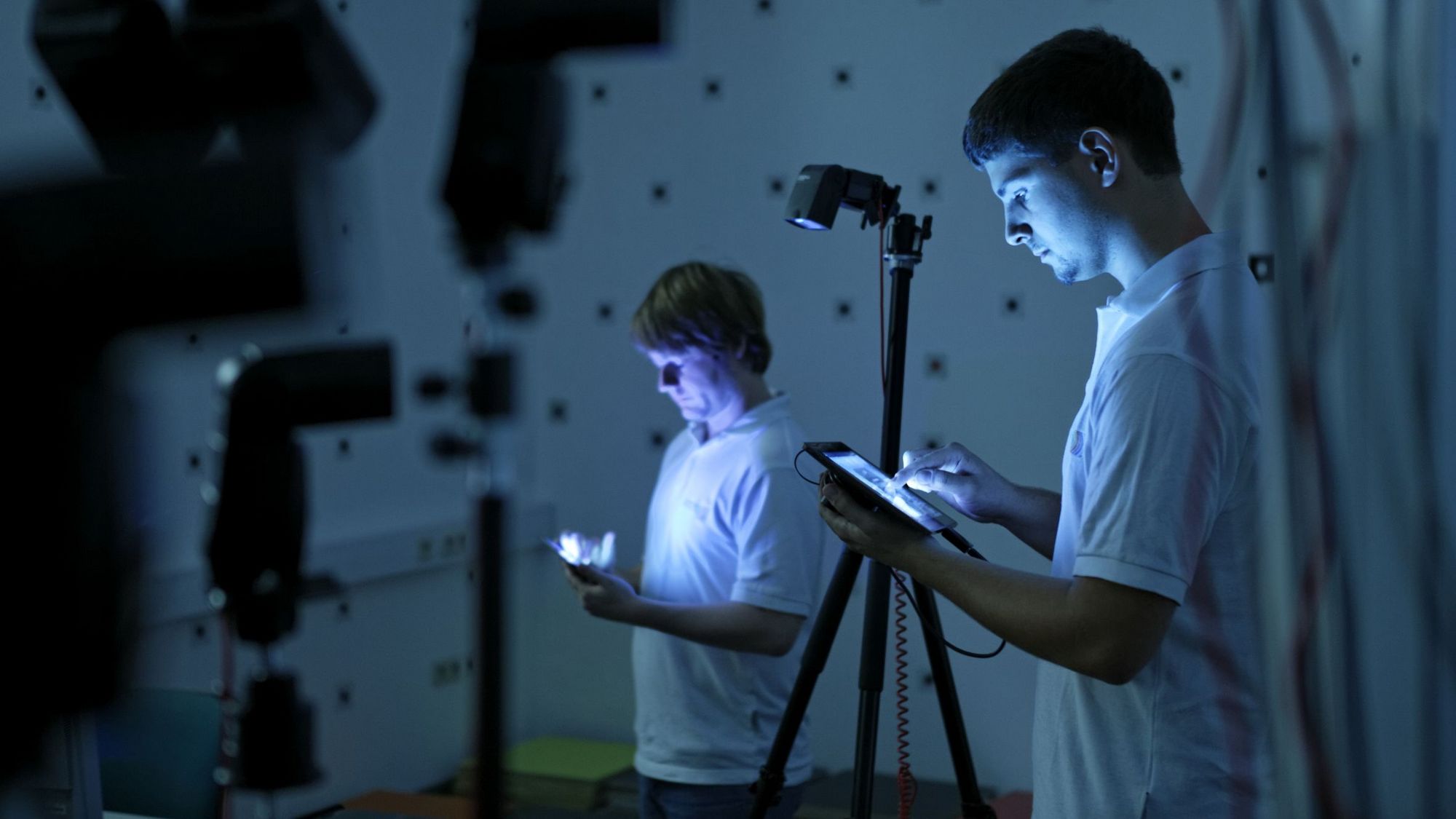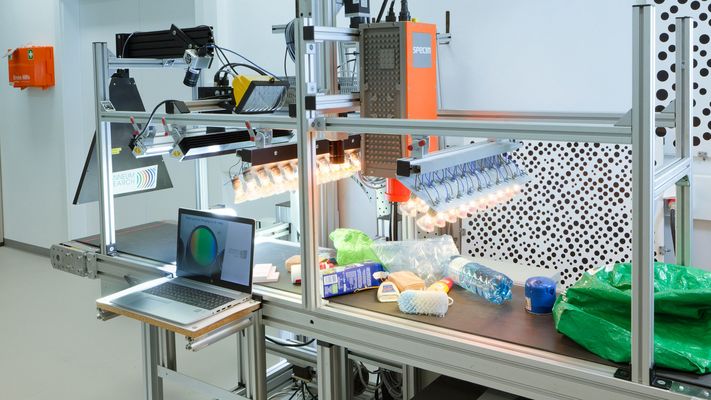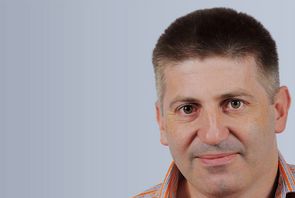Image processing laboratory
In the image processing laboratory, a wide variety of experimental setups can be implemented and used to investigate a wide range of issues from optical metrology, optical spectroscopy and machine vision.
In addition to a platform for optical setups, a conveyor belt for line by line scanning sensors (line scan cameras) and an elevating platform for the vertical transport of independent objects for 4-sided inspection are available. Both of these transport devices are essential when the controlled movement of an object to be measured is necessary, for example, when implementing the light-section method or when performing realistic tests of methods for inline inspection under real-time conditions.
The equipment includes:
- Cameras: CDD area scan cameras, cameras (color and B&W), high-speed CMOS cameras with non-linear characteristics and a high dynamic range (120 dB), color line scan cameras with beam-splitting technology (3 x 2048 pixels)
- Interfaces: GigE, IEEE1394, Camera Link, USB
- Optics: Lenses with 6.5 to 120 mm focal lengths, Nikon C-mount and F- mount adapters, various (very narrow band) filters encompassing the visible and NIR ranges
- Lighting: various, partly special constructions with LED light sources, HQI studio light with light shapers, halogen lighting with fiber optic beam former, light distributor with semi-transparent mirror, various lasers, thermal and NIR infrared lighting
- Trigger unit: autonomous trigger sensor as well as displacement sensors that are permanently mounted to the transport devices and have various level and frequency converters that adapt to camera requirements
- Measurement technology: Multimeters and oscilloscopes for the analysis of complex trigger events, laser meter, digital thermometer
- High speed multispectral line scan cameras, thermal cameras, multispectral line scan cameras, push-broom sensors in the range of 200nm - 5300nm are used for imaging in laboratory as well as industry related tests.
Climate and sustainability goals require the recovery and recycling of valuable materials from all possible sources. Currently, recyclable materials from waste streams can hardly or not at all be recycled, which makes it all the more important to identify and process the scarce and limited resources with the least possible use of energy and processing aids.
JOANNEUM RESEARCH DIGITAL is conducting research on a largely automated characterization of the valuable and interfering materials contained. High potential is seen in fusion and multidimensional data analysis from all real-time capable sensors in combination with algorithms from the field of artificial intelligence. New multispectral camera systems allow the acquisition of data sets in multiple wavelengths in the visible to near-infrared range. These data can be used to derive a wide range of material properties that can be used to characterize the composition of material or product streams, such as in waste separation.
The overall system, which is unique in Austria, is available at the DIGITAL Institute in the image-processing laboratory and includes extensive sensor technology:
- 3D camera
- UV camera
- Imaging spectrographs
- NIR and multispectral cameras
- Acoustic sensor technology
The complete data sheet of the conveyor system is available for download!
Which industries are addressed?
- Waste management
- Circular economy
- Raw materials
- Material processing industry
- Metal industry
- Metrology
- Research and development
- Quality Assurance
- Food industry




